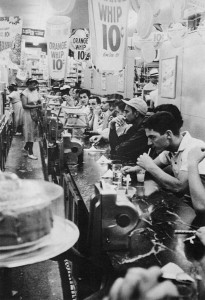For this homework assignment, please watch a short video on a recent exhibition at Stanford University’s Cantor Center for Visual Arts. The exhibition highlighted Robert Frank’s seminal photography book The Americans (1958) and the photographs that didn’t make it into the publication. The book contains only 83 photographs but Robert Frank took many more. The video gives you a tour of the exhibition with the curator Peter Galassi, formerly of MoMA. What do you think of the themes addressed in Frank’s photographs, do you find them artistic? bleak? or political? Please make sure you review your notes on Robert Frank for the final exam.
Take a short tour of the Cantor exhibition on Robert Frank here.
To complete this homework assignment, please submit a 100-word post. Please make sure you only check off the category #studentHW.
Please submit your posts by Tuesday December 12th!





I think the theme addressed in Frank’s photographs are very political and critical because looking at the photos, most of his photos look raw and the people on them look bleak, disturbed, and uninterested in what they are doing. I think he was trying to create photos of what he thought “America” was like but didn’t realize the significant effect his photos had on others. For example, the photo of the racial group of people on the bus, which to us symbolizes racism and/or white privilege, Or the picture of an African American women holding and/or caring for a white baby. His photos were very interesting because at first he didn’t know what was going on in the South. As he took photos, he seen racism and white privilege. Although he was artistic, his photos symbolized a different picture to others who viewed his photos. Robert Frank took pictures of different things like religion, and different types of street photography. His photos deal with racism, dissatisfaction with political leaders and he was ambiguous toward rising consumer culture.